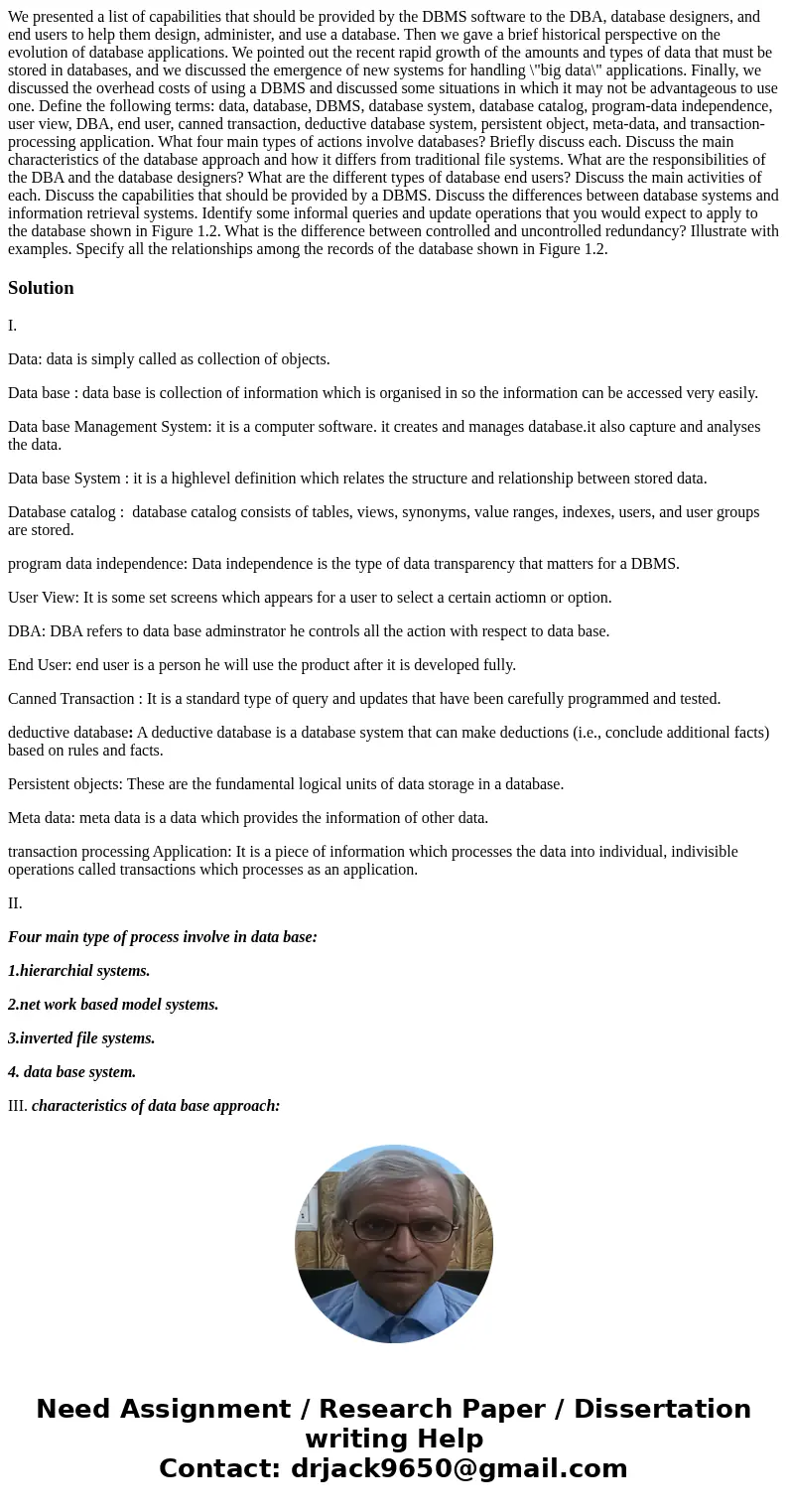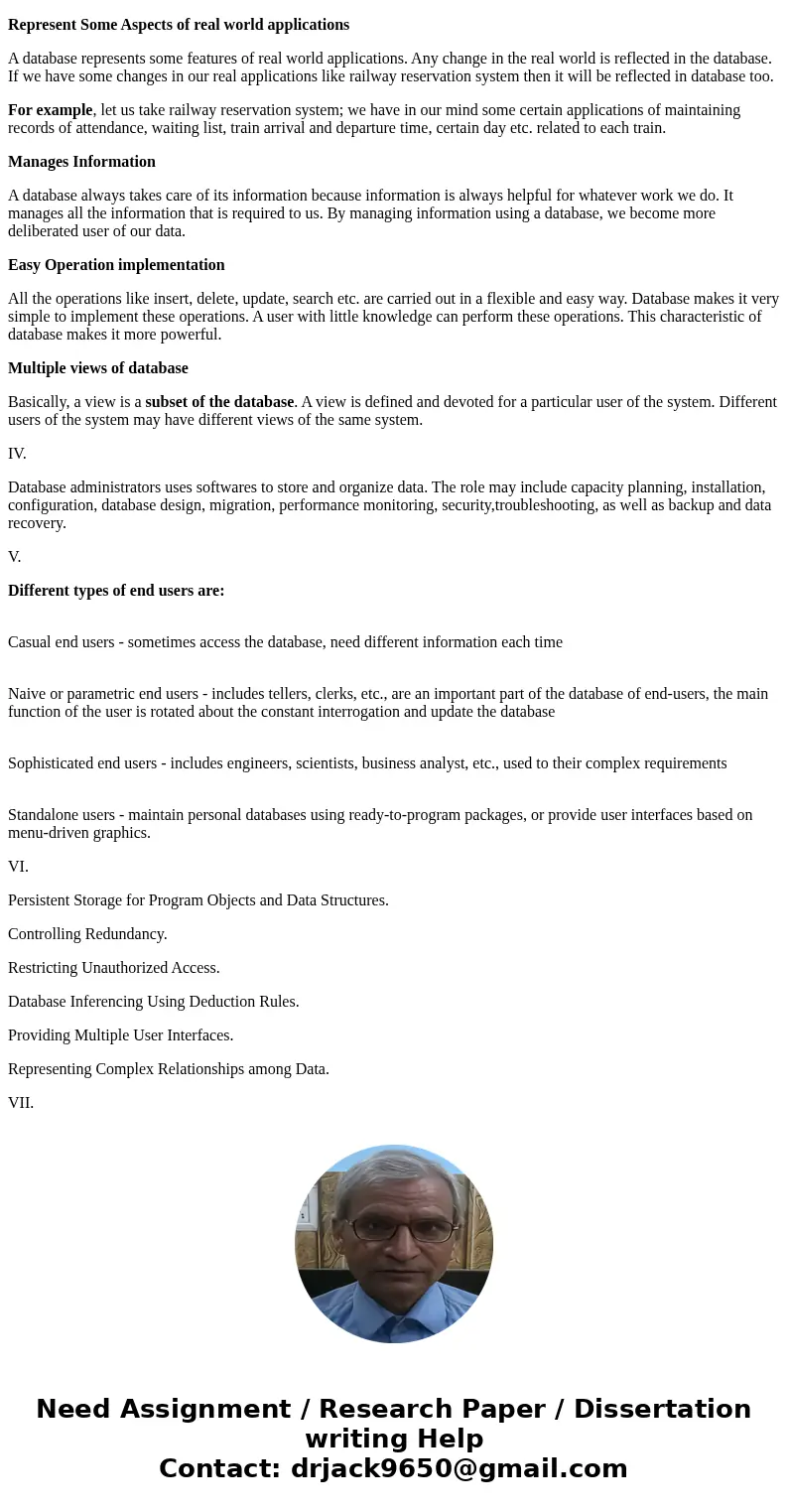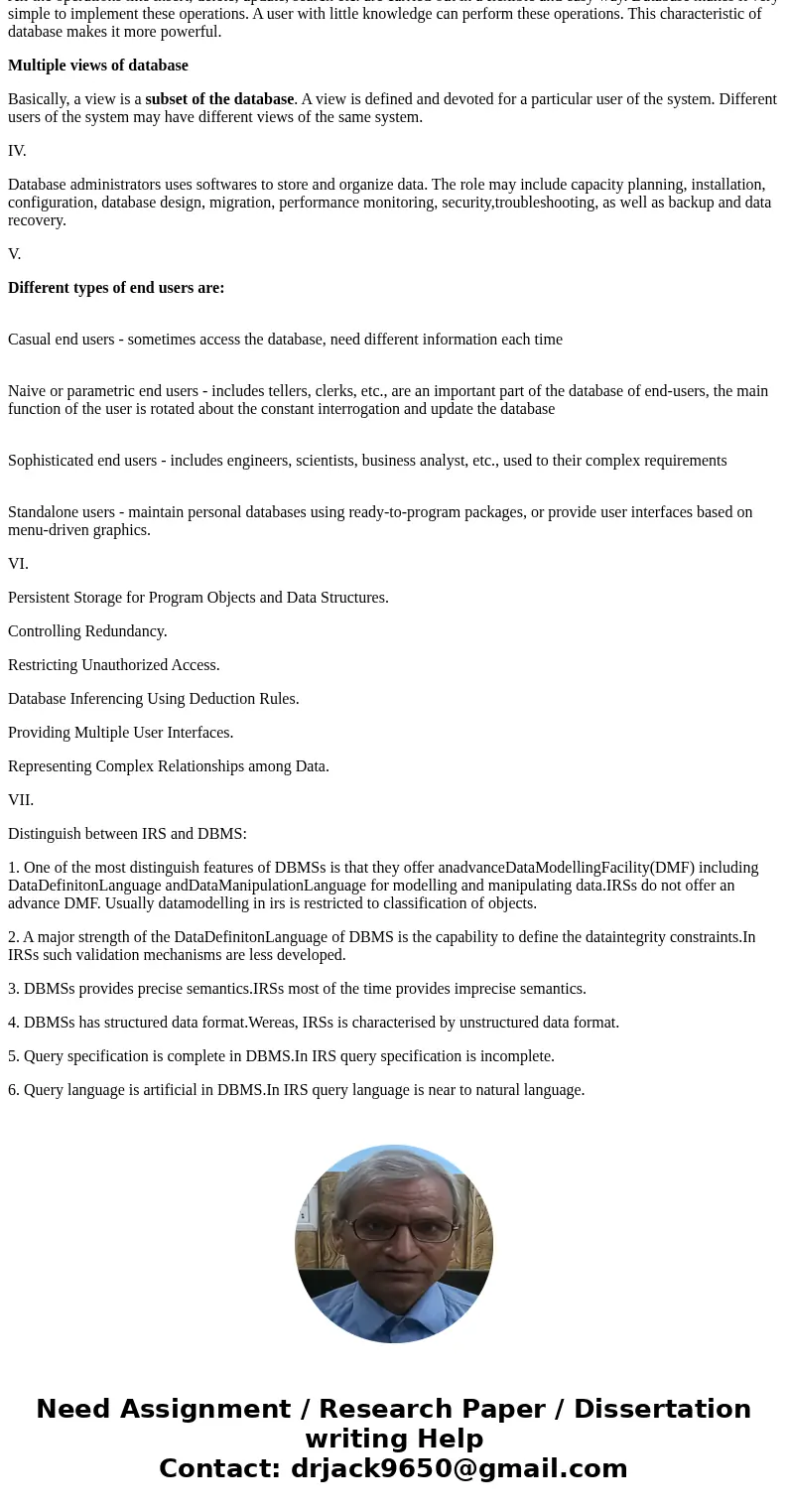We presented a list of capabilities that should be provided
Solution
I.
Data: data is simply called as collection of objects.
Data base : data base is collection of information which is organised in so the information can be accessed very easily.
Data base Management System: it is a computer software. it creates and manages database.it also capture and analyses the data.
Data base System : it is a highlevel definition which relates the structure and relationship between stored data.
Database catalog : database catalog consists of tables, views, synonyms, value ranges, indexes, users, and user groups are stored.
program data independence: Data independence is the type of data transparency that matters for a DBMS.
User View: It is some set screens which appears for a user to select a certain actiomn or option.
DBA: DBA refers to data base adminstrator he controls all the action with respect to data base.
End User: end user is a person he will use the product after it is developed fully.
Canned Transaction : It is a standard type of query and updates that have been carefully programmed and tested.
deductive database: A deductive database is a database system that can make deductions (i.e., conclude additional facts) based on rules and facts.
Persistent objects: These are the fundamental logical units of data storage in a database.
Meta data: meta data is a data which provides the information of other data.
transaction processing Application: It is a piece of information which processes the data into individual, indivisible operations called transactions which processes as an application.
II.
Four main type of process involve in data base:
1.hierarchial systems.
2.net work based model systems.
3.inverted file systems.
4. data base system.
III. characteristics of data base approach:
Represent Some Aspects of real world applications
A database represents some features of real world applications. Any change in the real world is reflected in the database. If we have some changes in our real applications like railway reservation system then it will be reflected in database too.
For example, let us take railway reservation system; we have in our mind some certain applications of maintaining records of attendance, waiting list, train arrival and departure time, certain day etc. related to each train.
Manages Information
A database always takes care of its information because information is always helpful for whatever work we do. It manages all the information that is required to us. By managing information using a database, we become more deliberated user of our data.
Easy Operation implementation
All the operations like insert, delete, update, search etc. are carried out in a flexible and easy way. Database makes it very simple to implement these operations. A user with little knowledge can perform these operations. This characteristic of database makes it more powerful.
Multiple views of database
Basically, a view is a subset of the database. A view is defined and devoted for a particular user of the system. Different users of the system may have different views of the same system.
IV.
Database administrators uses softwares to store and organize data. The role may include capacity planning, installation, configuration, database design, migration, performance monitoring, security,troubleshooting, as well as backup and data recovery.
V.
Different types of end users are:
Casual end users - sometimes access the database, need different information each time
Naive or parametric end users - includes tellers, clerks, etc., are an important part of the database of end-users, the main function of the user is rotated about the constant interrogation and update the database
Sophisticated end users - includes engineers, scientists, business analyst, etc., used to their complex requirements
Standalone users - maintain personal databases using ready-to-program packages, or provide user interfaces based on menu-driven graphics.
VI.
Persistent Storage for Program Objects and Data Structures.
Controlling Redundancy.
Restricting Unauthorized Access.
Database Inferencing Using Deduction Rules.
Providing Multiple User Interfaces.
Representing Complex Relationships among Data.
VII.
Distinguish between IRS and DBMS:
1. One of the most distinguish features of DBMSs is that they offer anadvanceDataModellingFacility(DMF) including DataDefinitonLanguage andDataManipulationLanguage for modelling and manipulating data.IRSs do not offer an advance DMF. Usually datamodelling in irs is restricted to classification of objects.
2. A major strength of the DataDefinitonLanguage of DBMS is the capability to define the dataintegrity constraints.In IRSs such validation mechanisms are less developed.
3. DBMSs provides precise semantics.IRSs most of the time provides imprecise semantics.
4. DBMSs has structured data format.Wereas, IRSs is characterised by unstructured data format.
5. Query specification is complete in DBMS.In IRS query specification is incomplete.
6. Query language is artificial in DBMS.In IRS query language is near to natural language.



 Homework Sourse
Homework Sourse